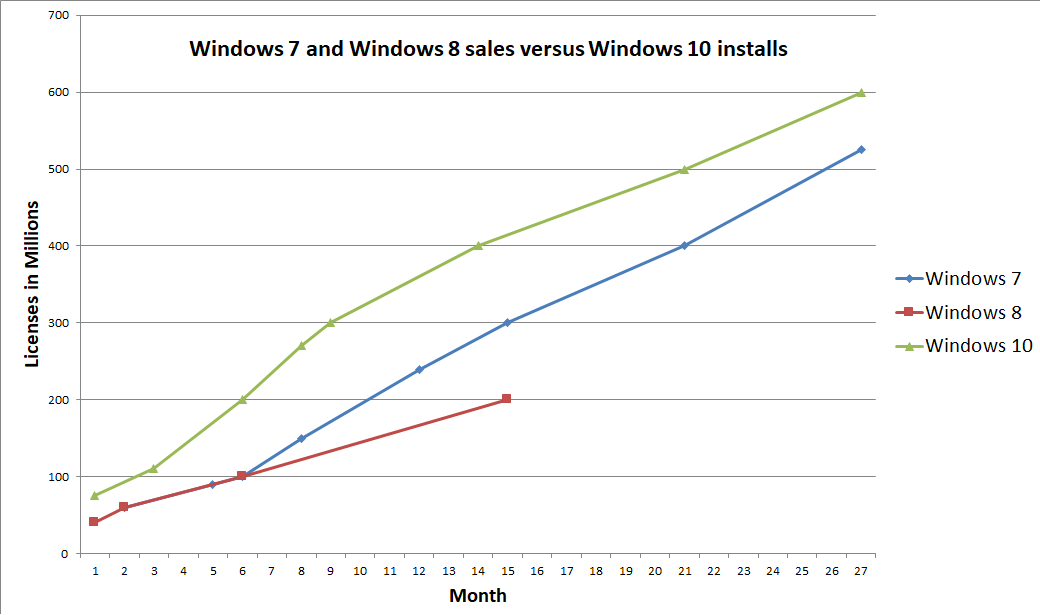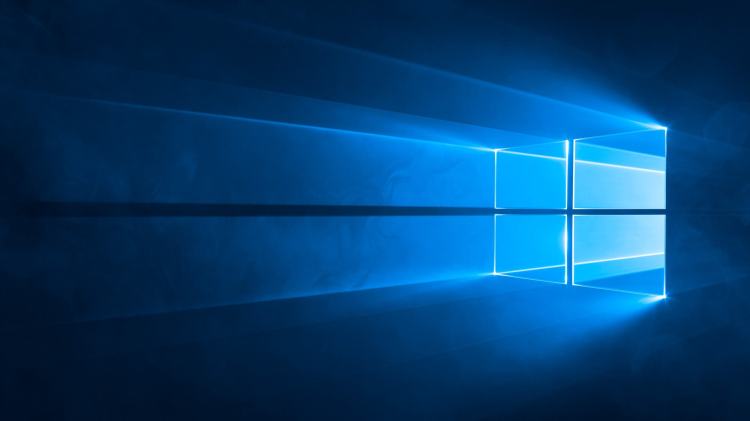At Microsoft’s annual shareholders meeting today, CEO Satya Nadella announced that Windows 10 is now on over 600 million monthly active devices. It took the company’s latest and greatest operating system about 27 months to hit that milestone, as first reported by GeekWire.
Windows 10 was installed on over 75 million PCs in its first four weeks, passed 110 million devices after 10 weeks, 200 million in under six months, 270 million after eight months, 300 million after nine months, 350 million after 11 months, 400 million after 14 months, and 500 million after 21 months.
Microsoft was aiming for 1 billion devices running Windows 10 “in two to three years,” but backpedaled on that goal. The company is inching closer to 1 billion, but at this rate, we would estimate 2020 as the likely timeframe.
Here’s the progress in a chart, with Windows 7 and Windows 8 thrown in for context (Microsoft stopped reporting Windows 8 milestones after 200 million):
June 5th: The AI Audit in NYC
Join us next week in NYC to engage with top executive leaders, delving into strategies for auditing AI models to ensure fairness, optimal performance, and ethical compliance across diverse organizations. Secure your attendance for this exclusive invite-only event.

As you can see, Windows 7 and Windows 8 milestones were similar for the first six months or so, though it quickly became clear that Windows 8 was not selling as quickly as its predecessor did. Windows 10 has been ahead of both from the start, though its slope has expectedly flattened just as previous versions have.
Windows 10 adoption is faster than that of its predecessors for a number of reasons. Here are the three big ones:
- Windows 10 was available as a free upgrade for Windows 7 and Windows 8.1 users during its first year, which is why Microsoft counts “active devices” with Windows 10 rather than “license sales.”
- Microsoft includes Windows 10 Mobile devices, Xbox Ones, Surface Hubs, and HoloLens devices in the total figure.
- With every subsequent Windows release, there are more computers and people in the world, meaning the potential number of devices that can be running Windows 10 is larger than for its predecessors.
Windows 10 is a service, meaning it was built in a very different way from its predecessors so it can be regularly updated with not just fixes, but new features, too. Microsoft has released four major updates so far: November Update, Anniversary Update, Creators Update, and Fall Creators Update.

